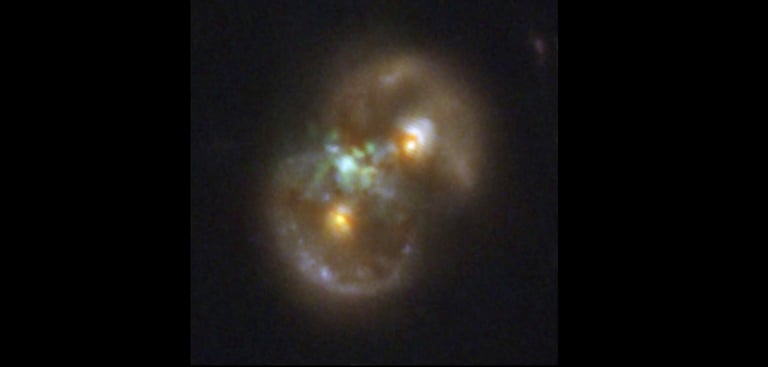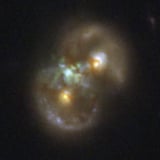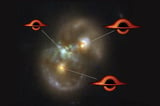Infinity Galaxy Discovery Reveals Rare Supermassive Black Hole Origins, Challenges Existing Theories
July 16, 2025
Scientists have discovered a rare ring-shaped galaxy duo called the Infinity Galaxy, which appears to host a supermassive black hole formed through direct collapse, offering new insights into black hole origins.
This discovery was made by analyzing data from the COSMOS-Web survey and conducting follow-up observations with NASA's James Webb Space Telescope and other observatories.
The JWST observations of the Infinity Galaxy provide valuable clues about the formation of supermassive black holes, especially in the context of the early universe.
Researchers plan to measure the velocities of the black hole and surrounding gas to determine if the black hole originated from that gas or if it was formed elsewhere.
Preliminary data shows the black hole's velocity closely matches that of the surrounding gas, supporting the idea that it formed from local gas rather than being a runaway or from another galaxy.
While not yet definitively confirmed, the evidence strengthens the case for a newly formed black hole, challenging some existing theories and prompting further investigation.
Van Dokkum notes that such galaxy collisions are rare but may have been common in the early universe, potentially leading to black hole formation.
The findings support the 'heavy seeds' theory, suggesting that massive black holes can form from large gas clouds collapsing during galaxy collisions, as observed in the Infinity Galaxy.
This discovery challenges the 'light seed' theory, which posits that black holes grow over billions of years through mergers of smaller black holes, by providing evidence of rapid formation.
Researchers propose that the black hole formed from a gas cloud compressed during the collision, leading to a direct collapse about 50 million years ago, which has since grown significantly.
Van Dokkum describes this as close to a 'smoking gun' for understanding black hole origins, especially given the black hole's unusual placement between the colliding galaxies rather than within their nuclei.
The black hole, located between the two colliding galaxies and feeding on gas, represents the first observational evidence of the direct collapse pathway of black hole formation.
This is the first time a newly formed black hole has been observed outside a galaxy's nucleus, providing a potential direct observation of black hole birth.
Summary based on 5 sources
Get a daily email with more Science stories
Sources

NASA Science • Jul 15, 2025
NASA’s Webb Finds Possible ‘Direct Collapse’ Black Hole - NASA Science

